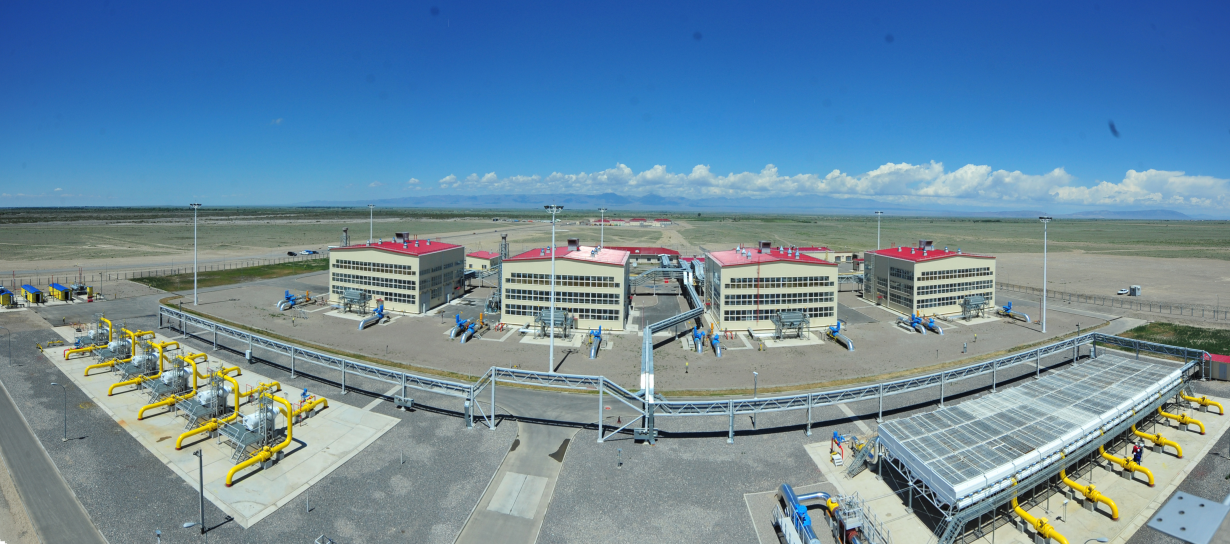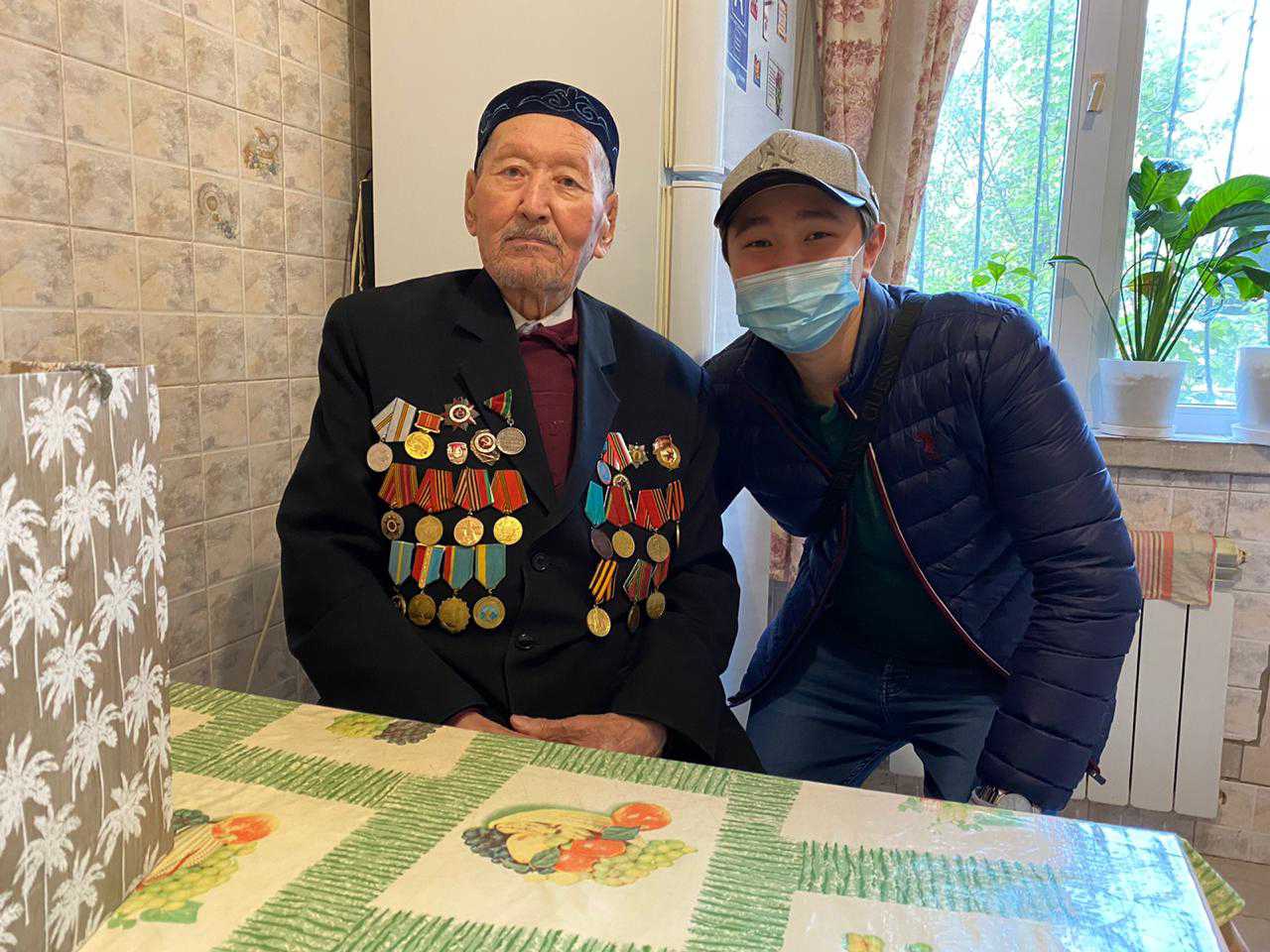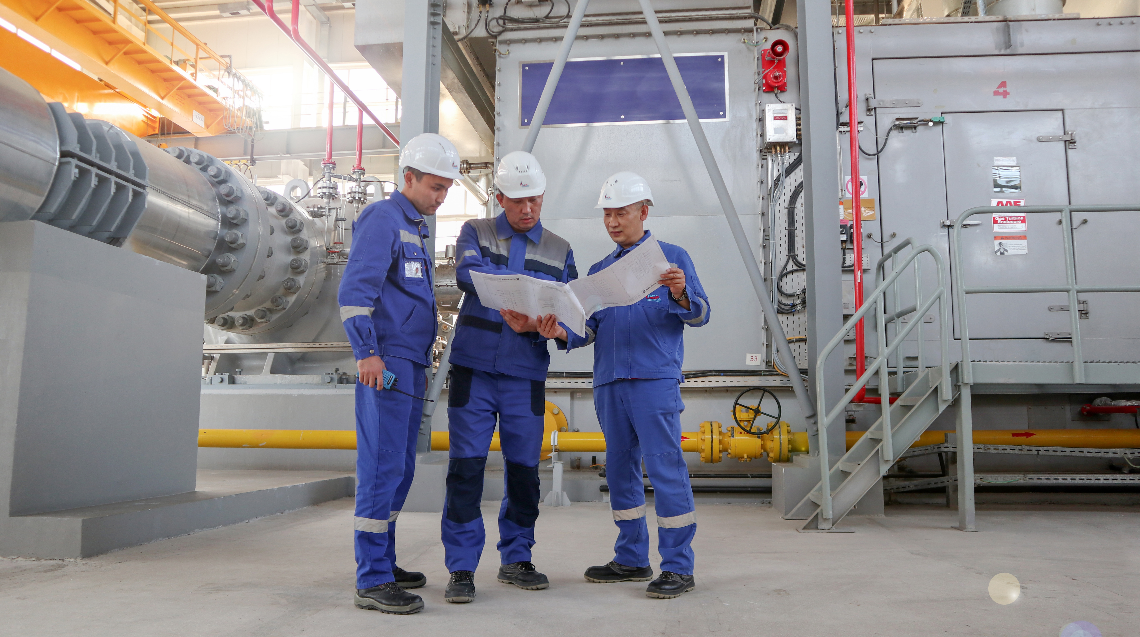Kazakhstan-China Gas Pipeline Project sets example for BRI energy cooperation: representative
The Kazakhstan-China Gas Pipeline, which set a new world record for the construction speed of similar gas pipelines, plays a significant role in driving technical improvements in the Kazakh pipeline industry, boosting the local economy and ensuring locals’ livelihoods.
The Kazakhstan-China Gas Pipeline is the longest section of the Trans-Asia Gas Pipeline, which is China’s first transnational natural gas pipeline and a shining example of energy cooperation under the Belt and Road Initiative (BRI). It runs from the border between Turkmenistan and Uzbekistan, passes through Uzbekistan and Kazakhstan and links up with China’s West-to-East Gas Pipeline in Horgos, Northwest China’s Xinjiang Uygur Autonomous Region.
Construction started in 2008 and was finished 28 months later.
“Even though its construction speed is unprecedented, we are confident the pipeline project can meet the strictest international environmental protection standards,” said Xue Lei, who is in charge of the Business Development Department at Sino-Pipeline International Company (SPI).

Construction site of Kazakhstan-China Gas pipeline in May 2013 Photo: Courtesy of SPI
Part of the China National Petroleum Corporation (CNPC), SPI is one of the two founding partners of Asia Gas Pipeline LLP (AGP), the joint company undertaking the construction and operation of the Kazakhstan-China Gas Pipeline.
Xue joined AGP in 2011 and stayed in Kazakhstan for nearly 10 years before being transferred back to the SPI headquarters in Beijing in July 2021. In a recent joint interview with the Belt and Road Portal (BRP) and China Petroleum Daily, Xue talked about his ten-year experience with the international pipeline project.
BRP: Could you please outline the timeline of the Kazakhstan-China Gas Pipeline Project?
Xue: AGP was registered and established in February 2008, and later that year construction work for the Kazakhstan-China Gas Pipeline officially started.
The project entered the construction and operation phases simultaneously when line A was put into service in December 2009. Since then, the pipeline has been operating stably and safely for more than 11 years.
Line B started operating in 2010, followed by line C in 2014. By 2017, all three lines, as well as the compressor stations, completed construction, allowing the pipelines to realize an annual gas transmission capacity of 55 billion cubic meters.
BRP: How is the operation performance of the China-Central Asia Gas Pipeline?
Xue: Since it was put into service, the Trans-Asia Gas Pipeline has made significant contributions to China’s pollution reduction efforts.
The natural gas that imported via the pipeline, is capable of replacing 486 million tons of coal, reducing carbon dioxide emissions by 519 million tons and sulfur dioxide emissions by 8.15 million tons. According to our rough calculations, this pollution reduction effect is equivalent to 300 million cars being taken off the roads for a year.
BRP: What does the Kazakhstan-China Gas Pipeline project mean for Kazakhstan?
Xue: The Kazakhstan-China Gas Pipeline adopts large diameter pipes with high pressure, as well as cutting-edge compressor units. The project therefore plays an important role in driving technical improvements in the Kazakh pipeline transport industry.
The project plays a positive role in boosting the local economy, with most of our procurement taking place locally and a large number of job positions being offered to local people. Currently, the pipeline project employs more than 1,000 local staff. Earlier, during the construction period, nearly 10,000 local jobs were created.
AGP is also actively involved in local charities. A fixed amount of the project’s annual budget is invested in public welfare, including schools, education and veteran associations, making positive efforts in ensuring people’s livelihood.

An AGP staff member (right) visits a Kazakh veteran in November 2020. Photo: Courtesy of SPI
BRP: Do you have any examples of the challenges that emerged during the project?
Xue: The most critical challenge was the strict construction time limit that we faced. The upstream procurement contracts and downstream sales contracts were signed when the whole project was launched, so the time left for construction was fixed and limited. It only took 28 months to build this pipeline that crosses four countries, which set a world record for the construction speed of gas pipelines of the same kind.
However, even under such huge time pressure, no environmental or technical standards were compromised during the pipeline construction. We are confident the pipeline project can meet the strictest international environmental protection standards.

Staff at AGP discuss project construction and operation in August 2018. Photo: Courtesy of SPI
We established an Integrated Management System, which aligns with international standards and has acquired international certification. By strictly following the system during both construction and operation periods, we made sure that the pipeline project meets the requirements of local environmental laws and regulations, as well as AGP’s pro-environment goals.
For instance, we carried out intense environmental impact assessments before investment, implemented environmental protection methods in our feasibility study and preliminary design, and paid specific attention to the impact on the environment during construction. During the operation period, we closely monitored greenhouse gas emissions and hired qualified third-party companies to take care of waste disposal.
BRP: What efforts has AGP made in terms of localization?
Xue: AGP has made great efforts to make sure that the construction and operation of the project relies on local people as much as possible. Since its establishment, AGP has managed to maintain a 90 percent ratio of local employees, even though the staff size has been constantly expanding. At present, there are about 1,280 employees in total, of whom only about 10 percent are Chinese.

AGP staff on a team-building activity in August 2018 Photo: Courtesy of SPI
AGP also attaches great importance to guaranteeing employee welfare, including local employees’ career development. Each year, a selected number of AGP’s local employees are sent to China to receive training.
We have a large number of local employees who have worked with us for more than 10 years. Some have even been there since the very first day, when AGP was founded. In their words, they have a deep affection for AGP, because they have witnessed the joint efforts of both China and Kazakhstan in turning the pipeline project from an idea into reality, step by step.
BRP: In constructing and operating the project, did you feel any change after the launching of the BRI?
Xue: I certainly did.
As the BRI moved forward, I could feel there were more Chinese people visiting Kazakhstan more frequently for business and cultural exchanges, and communication between governments and businesses of the two countries is also growing.
In terms of the Kazakhstan-China Gas Pipeline Project, during the construction of Line C, we obviously felt that we received more understanding and support when communicating with local governments and partners from both China and Kazakhstan.
BRP: Could you tell us what left the deepest impression on you in your 10 years in Kazakhstan?
Xue: For me, the most unforgettable experience was when the COVID-19 outbreak took place in Wuhan, Central China’s Hubei Province, in February 2020. The pandemic had not spread to Kazakhstan at the time, but our Chinese employees were rather concerned about their families at home.
After hearing about the situation in China, our local partners and employees spontaneously gave us a lot of support and encouragement by purchasing medicines, masks and other protective equipment that were available in Kazakhstan and sending them to China.
Our local friends at AGP gave us their drawings with hand-written Chinese characters on them saying “Support China” or “Hang in there, Wuhan”. It was a very moving and heart-warming moment when I saw how the friendship between China and Kazakhstan had grown over the past decade through the pipeline project.

A poster rallying China and Kazakhstan to fight against the pandemic by AGP in March 2020 Photo: Courtesy of SPI


